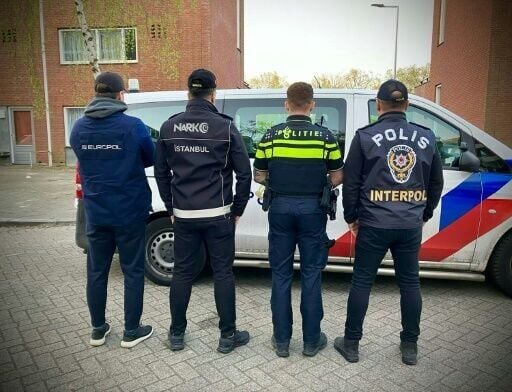Introduction: A Takedown Heard Around the World
In one of the most sophisticated and wide-reaching law enforcement operations in European history, over 200 suspected criminals were arrested in a multi-nation crackdown that exposed a major drug trafficking syndicate. This wasn’t just another bust—it was the culmination of months of intelligence sharing, undercover work, and precise coordination across borders.
Dubbed Operation Wave breaker by EUROPOL insiders, the effort revealed how criminal networks operate like corporations, leveraging global shipping, encrypted communication, and shadow economies. But it also showed how international cooperation can strike with precision—and impact.
The Numbers Behind the Raid: A Haul Beyond Imagination
According to the original report, coordinated raids across seven European nations led to:
- Over 200 arrests
- 3,000 kilograms of cocaine and methamphetamine seized
- Dozens of properties searched
- Millions in cash and luxury assets confiscated
The scale of the operation indicates just how deeply embedded organized crime has become in Europe’s urban and port infrastructure—from Antwerp to Valencia.
Expertise in Action: How Authorities Coordinated Globally
What made this operation successful was the seamless integration of intelligence services, national police units, and anti-drug task forces. EUROPOL provided real-time data analysis and logistical support, while national law enforcement agencies conducted boots-on-the-ground raids.
This high-stakes cooperation included:
- Encrypted communication crackdowns (via cracked Sky ECC and ANOM systems)
- Real-time data sharing platforms
- Undercover infiltration of logistics chains
- Coordinated surveillance across borders
Cybersecurity expert Dr. Helena Voigt notes:
“This shows what law enforcement can do when agencies trust each other. Intelligence collaboration is the future of crime prevention.”
Criminal Networks: From Cartels to Crypto
The syndicate targeted wasn’t a ragtag crew of smugglers—it was a well-financed, highly organized conglomerate. It included:
- South American cartels supplying drugs
- European brokers laundering money through crypto
- Corrupt freight handlers and logistics insiders
- Shell companies spanning the Netherlands, Germany, and the Balkans
Criminals operated with frightening efficiency—funnelling product through ports like Rotterdam and Hamburg, laundering proceeds via Bitcoin and offshore trusts, and using private jets to elude customs checks.
This was white-collar crime with blood on its hands.
Technology and Intelligence: The New Weapon Against Crime
One of the biggest wins in this case was the use of decrypted criminal messaging apps—similar to tools that brought down other European networks in 2022 and 2023. Authorities used these insights to track orders, map leadership structures, and predict shipment dates.
EUROPOL’s digital forensics team employed:
- AI-driven behavioral mapping
- Pattern recognition software
- Geo-tagged tracking from intercepted messages
This blend of traditional investigation and cutting-edge tech shows that digital surveillance is rapidly evolving, often outpacing criminals themselves.
Community Impact and the Message Sent
Operations of this scale don’t just affect the criminal elite—they send a clear signal to communities and vulnerable populations often exploited by cartels. By seizing weapons, dismantling labs, and arresting ring leaders, law enforcement effectively weakened the supply chain that fuels addiction and gang violence.
In fact, the societal impact mirrors cultural commitments like those seen in RiverBeat’s partnership with the Stax Music Academy, where art and structure aim to uplift communities vulnerable to crime.
Challenges Still Ahead: Is This Sustainable?
Despite the massive success, experts warn against complacency. Dr. Carlos Menendez, a criminologist specialising in international drug policy, notes:
“These networks regenerate like hydras. Cut off one head, and two may grow back. The solution must be holistic: enforcement, prevention, education, and rehabilitation.”
Key issues moving forward:
- Port security gaps
- End-to-end surveillance blind spots
- Financial system loopholes enabling laundering
- Recruitment of at-risk youth
Without continuous pressure and social reinvestment, crime will simply evolve—and return stronger.
Conclusion: A Landmark Victory, But Not the Final Battle
This operation marks a major milestone in the global war against drug trafficking, showcasing how collective expertise and unified strategy can disrupt even the most elusive syndicates. It’s a lesson in what’s possible when authorities treat organized crime not as isolated acts—but as a networked global enterprise.
As long as the demand exists, new groups will rise—but thanks to actions like these, the rules of the game are changing. Europe has shown it’s willing to fight smarter—and together.





Comments